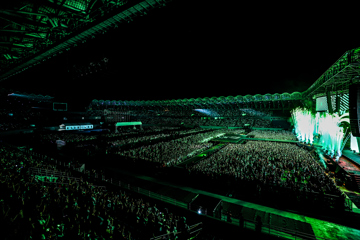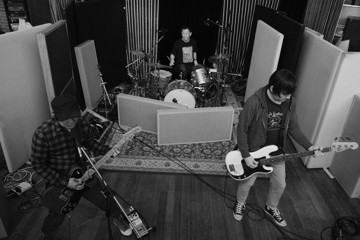'Alita: Battle Angel' - AKA James Cameron's Latest '3D CGI Monstrosity'
"So, here’s a simple question: isn’t this awful?"
ALITA: BATTLE ANGEL
★★
In 2017, James Cameron said, of his wildly-ambitious pursuit of a mega-batch of sequels to a deeply-awful movie, “let’s face it, if Avatar 2 and 3 don’t make enough money, there’s not going to be a 4 and 5”. This is, of course, just Hollywood business-as-usual, standard accounting for any series. And yet, it underlines a fundamental problem that’s come up with the Universation of blockbuster filmmaking: how seemingly every big-budget popcorn picture exists, now, in its relationship to others. No movie is an island. Something that’s unavoidable for viewers, even when they think they’re going to be going into a cinema to just see one movie.
And, so, Alita: Battle Angel —a film Cameron wrote and produced, and had planned to direct before being sucked into the Avatarverse— is a film that ends like a pilot episode: with the promise of more. The titular cyborg, played by Rosa Salazar (shouts to S02 Man Seeking Woman), has been born and come of age and loved and laughed and lost and kicked-ass in a dystopian cyberpunk 26th-century metropolis. But, by the end, as she stares down the last-act-reveal shadowy villain (Edward Norton!), what you’re left with is a simple message: stay tuned for more Alita adventures!
So, here’s a simple question: isn’t this awful? Can’t any film be its own thing anymore? Whilst it can be ironically enjoyable when box-office bombs — King Arthur: Legend Of The Sword, The Mummy, Kin; perhaps, evidently, Alita: Battle Angel itself — end with promises of sequels that you know are never to come, it’d be nice to encounter some 3D CGI monstrosity that was focused on telling a better story, rather than building a world for future instalments to inhabit.
The built world here is, indeed, a 3D CGI monstrosity. If you’re the kind of person really into digitally-created environs of ‘photorealist’ finish and detail-enriched depth, that’s great. But one of the many great revelations of watching the very great Spider-man: Into The Spider-verse was how fucking refreshing it is to see an animated environment, artistically stylised rather than faithfully rendered.
Don't miss a beat with our FREE daily newsletter
The storytelling is just as earnest as the environment-rendering. Its heroine is a cyborg with a human brain and a body fashioned from spare parts found in the grand junkyard of human civilisation. That body is built by father-figure Christoph Waltz, who is actually cast against type, here, and doesn’t turn out to be an evil scientist or super-villain or whatever. Waltz is a cyborg scientist grieving a lost daughter; his ex-wife, Jennifer Connelly, is also deep in grief, but gets about in glamour-casual outfits that’re the distant-future-dystopia equivalent of Country Road, looking day-spa-fresh wherever she goes.
Keean Johnson plays a very-bland hunky-love-interest, a spare-parts scrapper who does morally-dubious things in hopes of rising above his station; only for his sincere love of our nothing-but-good-and-true heroine to teach him to be a better man. His pal/partner-in-crime is played by Jorge Lendeborg Jr., which at least means there’s natural comparisons between this piece of lesson-teaching sci-fi kitsch and that of Brigsy Bear Adventures (sadly no mention, herein, of how many times it’s okay to touch your penis per day when feeling “romantic emotions”).
There’s evil bounty hunters, looking all villainous, from Ed Skein’s robotic nü-metal douche to Jackie Earle Haley as a hulking colossus who just totally wants to kill Salazar at all times (when Connelly says, of the latter: “He won’t even let me fix his eye! He says he wants the pain!”; it’s unintentionally hilarious). Salazar takes on a pile of these bros during a future-dystopian riff on the cliché hard-luck saloon, replete with wooden tables flipped over during a bar-fight. But the most standard future-dystopian trope comes with its televised Running Man-esque death-sport called ‘motorball’, whose murderous roller-derby races are depicted exactly like a demo-reel for a playable video-game.
The storytelling is all trope-riddled, with every development —be it heroic or tragic— feeling foreshadowed. Robert Rodriguez, serving as the director of this Cameron-pimped thing, shows little distinctive directorial vision, here; though you suspect this is one of those movies where set-ups are handed off to CGI technicians in advance, fight-scenes are choreographed by a third-party, and the director is essentially on hand to keep the departments working. In that way, Alita: Battle Angel is weirdly bland for a film that posits the Earth fell into post-apocalyptic ruins after a war with Martian forces in the 23rd century.
HAPPY DEATH DAY2U
★★★
Midway into Happy Death Day 2U — Christopher Landon’s two-years-on follow-up to his surprisingly-delightful, Groundhog Day-meets-Scream original — there’s a scene where characters make comparisons to what they’re going through and Back To The Future 2. It’s a cute bit of hat-tipping, effectively signalling the hope for this second-lap-around the time-loop block: bigger, more ambitious, more ridiculous, a greater exploration of the possibilities of the series’ essential premise. The film even ends with a mid-credits teaser that, if not throwaway gag, could be the bait for a third film; though it doesn’t appear to be set in the Old West.
The only problem is that Happy Death Day 2U may be plenty of fun, but it’s a veritable exemplar of a diminishing-returns sequel.
The first film presented a simple premise: Jessica Rothe was stuck in a time-loop where, on her birthday, she was killed, in slasher-film fashion, by a knife-wielding villain in a creepy baby mask. After each death, she’d wake up, again and again, living the same day over-and-over. Like its recent predecessor in the time-loop cine-realm, Doug Liman’s awesome Edge Of Tomorrow, it was a smart narrative riff on a familiar video-game feeling: failing at the same task, over and over, until finally you master it, and complete the game.
This film can’t exist in such a self-contained premise, and instead spreads out, complicates the idea. No more is its conceit a storytelling device, instead we’re treated to an explanatory story involving quantum mechanics, a grand weird-sciencey device out to understand time “on a molecular level”, and plentiful parallel-universe theories. In its opening sting, last flick’s wacky-roommate (Phi Vu) is drawn into a time-loop, but quickly the narrative is handed back to Rothe; who is, again, unexpectedly good in a role balancing silliness, profundity, rage, and a turn from victim to action-movie heroine. But rather than a singular hero’s adventure, here it’s a team-up movie, with a lab worth of science-geeks in on a plot to return Rothe to her real timeline or set the universe right or whatever.
Where Happy Death Day played as a black-comedy, even a satirical riff on slasher tropes and the maddening familiarity of genre, 2U is a far-broader comedy, summoning the clichés of ’80s campus movies. There’s a teacher named Professor Boner, for starters. Steve Zissis plays the bitter-dean out to foil the kids’ fun; and a scene in which Rachel Matthews poses as a blind, French-exchange-student to ‘distract’ the dean is as zany and sketch-comedy-worthy as you suspect. Funnier are some of the smaller gags: ironic musical cues, especially in a grand ultra-slow-motion explosion; a montage of comic deaths part Edge Of Tomorrow, part Deadpool 2; and a drawn-out, beautifully-timed scene involving a cop pissing.
It’s all pretty fun, and genuinely pleasing for anyone who enjoyed the first. And, even if you never saw it, there’s a ‘movie recap’ in the opening act played for high-speed laughs. But, whilst it’s ultimately a perfectly-fine entertainment product, made with the ironic spirit a sequel deserves, Happy Death Day 2U still seems entirely unnecessary, a return to a singular idea that was never begging for a second spin.







